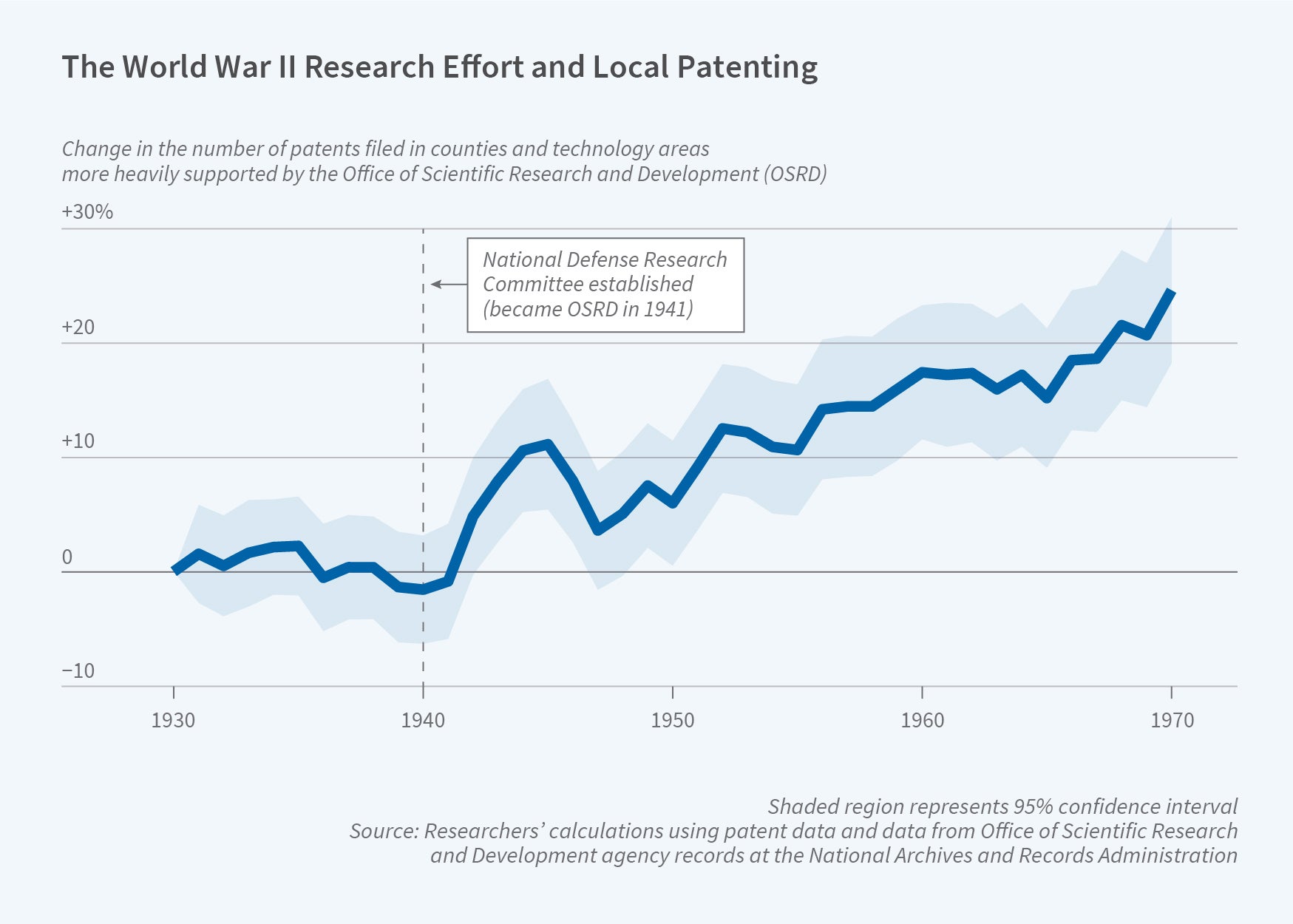World War II R&D Spending Catalyzed Post-War Innovation Hubs
Federal support for research led to a surge in wartime patenting and also propelled innovation hubs that fostered post-war discoveries and related employment growth.
A large, mission-driven government research and development (R&D) program can have far-reaching effects on the growth of technology clusters and the direction of technological progress. This is the conclusion of Daniel P. Gross and Bhaven N. Sampat in Inventing the Endless Frontier: The Effects of the World War II Research Effort on Post-War Innovation (NBER Working Paper 27375).
The researchers analyze the US government’s unprecedented effort in World War II to mobilize science for war through the newly created Office of Scientific Research and Development (OSRD). The OSRD entered into over 2,200 R&D contracts with industrial and academic contractors, spending roughly $7.4 billion in current dollars. The OSRD’s outlays more than doubled the government’s previous spending on scientific research. The researchers show that these investments had large effects on the direction and location of US invention and on high-tech industrial employment, setting in motion forces of agglomeration that shaped the technology clusters of the postwar era.
The researchers use archival records to create a dataset of OSRD contracts that includes detailed information on the contractors and the inventions and scientific publications they produced. They merge these records with data on the complete US patent record and on patenting abroad. They compare pre- and post-war patenting in technology areas that received substantial support from the war effort. They also compare patenting in these areas in the US and in foreign countries, and they compare patenting in US counties that received large versus small infusions of funding.
The study finds a clear divergence in the technological focus of patenting between the US and other Allied countries after the war. By 1970, US patenting in the technologies that were the focus of OSRD-supported research was more than 50 percent higher than in Great Britain and France.
The researchers also find sharp effects on the geography of domestic invention. When they compare counties and technology areas in which OSRD funding was most concentrated with those with less OSRD-supported research activity, they find that patenting surged during the war, fell back to pre-war levels when the conflict ended, and subsequently experienced a long-lived takeoff with persistent growth. This growth appeared to be concentrated in counties that were already patenting more heavily in these technology areas before World War II. The researchers conclude that although the wartime research effort did not create these technology clusters per se, it set in motion forces that led to growing agglomeration and widening disparities in the inventive output of different parts of the country.
Local research ecosystems sprang up in the locations and technology areas where OSRD activity was concentrated, including universities, federally funded research centers, and private invention. In communications and electronics manufacturing — industries that were closely tied to the wartime research effort — doubling of OSRD patents in the 1940s is associated with 60 to 65 percent higher employment in the 1970s. OSRD support seems to have built up local scientific and technological capabilities which allowed local innovation to thrive after the war and created jobs in associated manufacturing industries.
— Lauri Scherer



